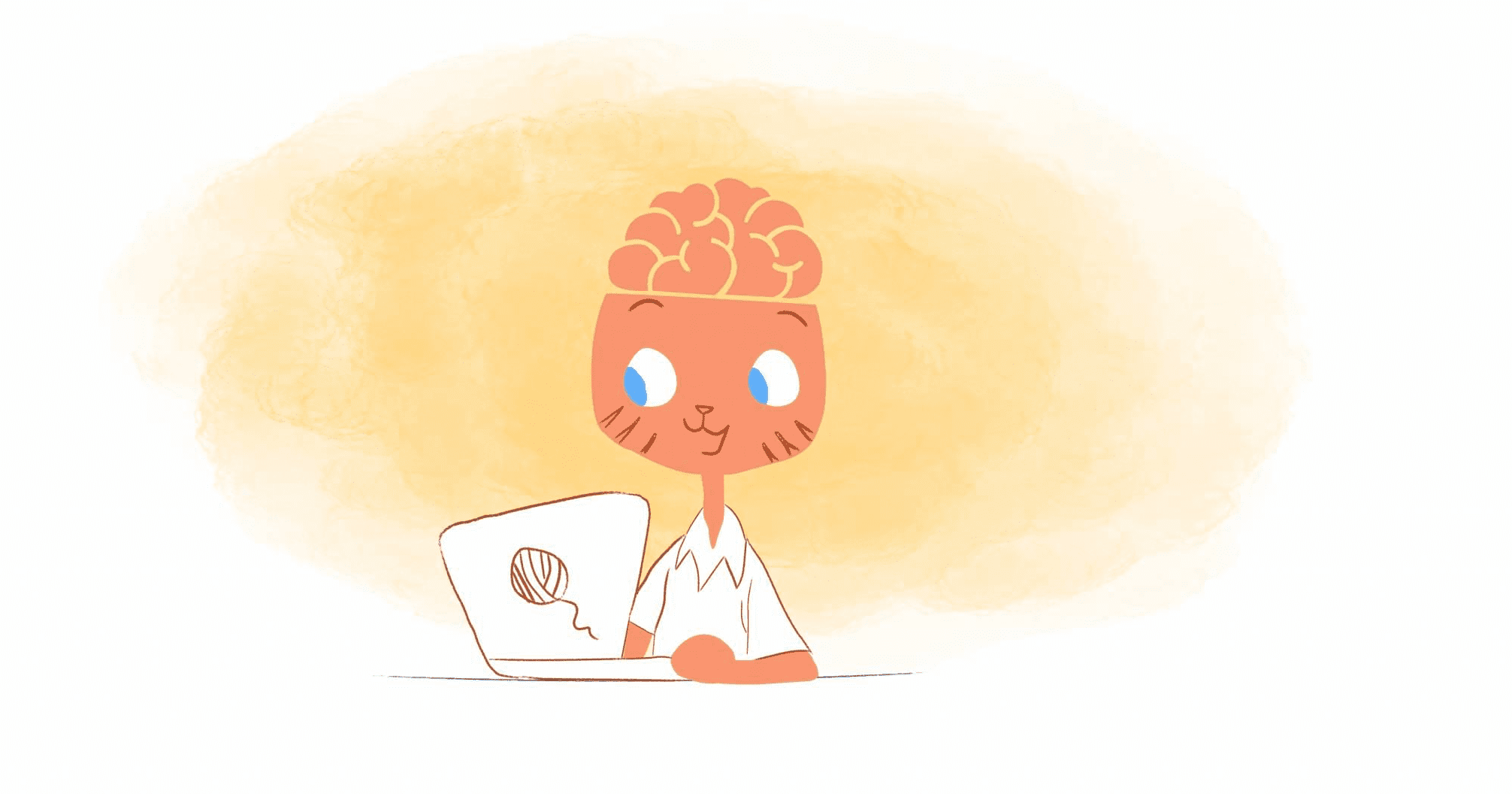

Gamification became more common in 2010 when it became more specifically associated with the integrating of social/reward elements of games into software. Since then, businesses have been developing gamification platforms, and marketers are employing game elements within their marketing campaigns.
An FYI about the concept — it originated in 1896 with S&H Green Stamps, where marketers sold stamps to retailers to reward loyal customers.
But is gamification in the workplace worth the hype? Well, gamification has been found to increase happiness and productivity. While that sounds promising, let’s explain what gamification is, as well as its advantages and disadvantages, before implementing it in your workplace.
What is Gamification?
The concept of gamification in the workplace involves incorporating challenges and tasks to make work more engaging. Employees are rewarded with it as a way to make work more enjoyable and meaningful for them.
As Steve Jobs once said, “The only way to do great work is to love what you do.” In the same way, gamification makes employees’ jobs more appealing and less stressful. Specifically, instant rewards, frequent surveys, and timely recognition trigger employees’ eagerness to do more.
It should be known that the goal of gamification is not to turn work into a game. Instead, the concept combines game mechanics with work responsibilities to increase productivity and make your job more interesting. What’s more, fostering employee engagement influences employees to focus on the greater good of the organization.
Examples of Gamification in the Workplace
If you’re still not 100% sure what gamification is or want some ideas on implementing it, here are ten examples of gamification in the workplace.
1. Game-based learning and employee training.
A web-based mini-course, complete with quizzes, fun characters, and assessment factors, can be used instead of employing presentations or manuals when training employees. Adding interactive features can boost employee participation and increase employee engagement, thus making learning more memorable.
Moreover, quizzes and trivia based on points are an excellent way to measure employee learning and pinpoint areas for growth.
2. Encourages employee certification.
Employees who complete an online course will receive a certificate. Eventually, the company will have developed an online course library covering a wide range of topics. Through this, the company promotes employee development.
3. Interactive leaderboards.
Employee engagement and productivity can be significantly enhanced through friendly competition. Gamification (and quantification) of the competition can be achieved by creating a points-based leaderboard. Game-based employee motivation is especially effective for sales reps and top-performing employees who want to go above and beyond.
4. On-the-spot or social media-style recognition.
By adding a sense of spontaneity, intermittent rewards increase employee engagement. As an added benefit, employees are more likely to learn and repeat good behavior after receiving unexpected rewards. Making the workplace more thrilling with on-the-spot recognition certificates is a powerful tool for gamification.
In today’s world, social media plays a significant role in everyone’s lives — both personally and at work. With that goal in mind, social media-style recognition tools enable employees to promote and praise one another. As a result, your recognition program will be more socially engaging.
5. Spin-to-wins and scratch-off bonuses.
Who doesn’t enjoy a surprise? Gamification techniques like spin-to-wins and scratch-offs can boost employee engagement while also adding an unpredictable element.
6. Swag bags for the highest score.
For example, employees who receive the highest scores in a company-wide safety assessment will be awarded swag branded with the company’s logo. Therefore, employees will be encouraged to pay more attention to their answers instead of just rushing through the test as quickly as possible.
7. Badging and achievements.
Using gamification to engage your employees requires quantifying and visualizing achievements in a socially visible manner. Balancing and achievements fit all of these requirements and can be used with or without rewards.
8. Goal-tracking progress bars.
Whenever employees feel they’re progressing toward their goals, they’re more engaged and productive. Since gamification emphasizes a sense of achievement and progress, this is a no-brainer. In addition, employees can track their progress toward reaching their goals using goal-tracking software.
9. Rewards for company competitions.
Every gamification technique doesn’t need to focus solely on productivity. Occasionally, companies can improve employee morale just by just having fun together. For example, employees can compete against each other and earn rewards by holding company competitions, such as costume contests, cook-offs, or hackathons.
10. Qualification-based travel events.
Motivating employees with incentive travel can be very effective. Employees will work exceptionally hard if that means they can qualify for exclusive travel promotion. Remember, gamification is important for employee engagement because it involves limited, high-stakes rewards.
The Advantages of Gamification
Gamification can have a large variety of benefits at the workplace, such as the following.
Increases engagement, motivation, and productivity.
Gamification can undoubtedly play a significant role in increasing employee engagement. With gamification, tedious or recurring tasks are presented in a more challenging manner, which motivates them. Furthermore, when accomplished, employees find satisfaction and self-motivation. All of these factors are vital to the success of an employee in reaching their maximum potential.
In fact, according to eLearning, 80% of U.S. workers find that learning through games is a more engaging method of education. Companies have also found that using games as part of their training strategy increases productivity by 50% and employee engagement by 60%.
Furthermore, 79% of employees report that gamification has increased their motivation and purpose at work. And, 90% of employees feel more productive when they use gamification.
Improves the work environment.
For employees to deliver their best results, they need a healthy work environment to ensure their well-being. The work environment, however, can be toxic for a variety of reasons. Take favoritism, as an example.
If the same employees constantly receive praise just because they have a good rapport with the higher-ups, then the other employees can become demotivated. In addition, it’s unethical and unhealthy. Through gamification, employees have an equal opportunity to demonstrate their value, which eradicates these issues.
Boosts employee advocacy.
Using social media to boost your organization’s image can be a powerful strategy. Here, gamification again comes to the rescue.
When their employers recognize employees, they are more likely to share their experiences on social media. So, besides keeping them motivated and engaged, they become the voice of your organization. And, in turn, this will earn you goodwill from their followers.
This helps the organizations retain and also attract the best talents to work for them.
Enhances teamwork.
The culture of an organization is also positively impacted by teamwork. When like-minded individuals join forces to pursue a common purpose, nothing is unachievable. Gamifying the work environment makes this possible by bringing people with similar perspectives and interests to the workplace.
Therefore, organizations must maintain a healthy work culture that helps employees and the organization grow together.
The Disadvantages of Gamification
While there’s no denying that gamification in the workplace has several advantages, there are drawbacks that you should be aware of.
Gaming in enterprises is often ham-handed.
Gamification is often implemented by companies using the most generic methods. Instead of creating thoughtful, collaborative experiences that balance competition and collaboration, they impose point systems, badges, and leaderboards on every task. In short, they fail to create meaningful and fun work environments for their employees.
As a result of these reasons, Gartner predicts that 80% of workplace gamification initiatives will fail.
Play isn’t actually play when it’s mandated.
Farhad Manjoo of the Wall Street Journal argues that gamifying work will lead to employee revolt when bosses try to make work more fun. Also, Jane McGonigal, a gaming evangelist and author of “Reality is Broken,” believes that games, by their nature, are voluntary and shouldn’t be mandatory.
Overall, coercion is what happens when a company forces its employees to play along.
Gamification of the workplace can invite cheating and stabbing coworkers in the back.
Almost since the dawn of gaming, people have found ways to cheat. So it’s not surprising that a game-based work environment can easily entice people to cheat or exploit loopholes since this can boost their income, promotions, and raises.
The increase in internal competition could result in employees actively sabotaging each other or making unethical decisions rather than working together for the company’s benefit. For instance, there are plenty of allegations in SAP’s Community Network about users cheating to increase their ranking.
Over time, the novelty wears off.
It’s inevitable that most games will get tiresome after a while. Do you actually remember Flabby Bird, Guitar Hero, or FarmVille?
It can be a challenge integrating novelty into the experience to keep it exciting and engaging. Also, it may become tedious for workers to keep themselves motivated with badges, leaderboards, and challenges that they would otherwise not enjoy. In short, there may not be much long-term benefit to enterprise gamification.
The problem that enterprise gamification is trying to solve is real: the profound disengagement of the U.S. workforce. Yet it’s no cure-all. So even as some companies have seen positive results, deployments must first and foremost provide valuable benefits to employees.
Simply adding game-like elements to every job while neglecting the long-term welfare of the people using the software is clearly unsustainable. However, when the common pitfalls are considered, and game mechanics are carefully implemented, gamification can add fun, meaning, and motivation to the workplace.
How to Use Gamification at Work
Want to unlock the benefits of gamification in the workplace? Keep the following in mind.
Clearly communicate the goals and processes of the game
Suppose that you want your sales team to close a specific number of contracts within the next three months. Gamification could help you achieve this goal. But, it’s essential to make sure your team understands the following factors before starting this initiative:
- The game’s goals
- Criteria for knowing when they’ve won
- Winners’ rewards, second-place awards, etc.
- Why achieving goals is beneficial for the business as well as the individual
- Rules, particularly those which disqualify an employee
It’s crucial that all employees participating in gamification at work are aware of the rules of the game from the beginning. Nobody wants to participate in an unfair race, after all.
You should never underestimate the importance of a sense of purpose. So, make sure you clearly communicate both the purpose and the criteria for winning the game. And, there should also be the right degree of difficulty meaning missions shouldn’t be too easy or difficult.
Include gamification in training.
Incorporating gamification into employee training makes it more natural. By incorporating gamification features into your eLearning courses, you can unlock all the benefits of gamification in learning.
Among the most popular features of gamification are:
- Points. When learners complete tasks, achieve specific results, or log in to the platform, they earn points.
- Leaderboards. Competitors can earn the highest points and rank highest among their peers to create an exciting and dynamic work environment.
- Badges. Virtual badges can be earned on the profile of learners who accomplish tasks, achieve results, and demonstrate exemplary behavior.
- Rewards. Participation can also be further rewarded with real-world rewards like vouchers and discounts.
Offer desirable rewards.
Incentives are not the same for everyone. Games that motivate employees in the workplace should reward high achievement with relevant and desirable rewards.
Would a badge motivate your employees to perform well if you had a “star employee” program that recognized the outstanding achievement? Eventually, badges will lose their appeal. Instead, an employee might be more motivated by the promise of quality-of-life rewards or a larger prize.
Recognize everyone’s contribution.
Often, it’s only the high achievers who feel appreciated by gamification at work. In other words, gamification works best when it’s considered an incentive that makes employees feel like they’re helping the organization. Therefore, recognizing participation is just as crucial as recognizing achievements.
Take a moment to consider the kinds of rewards you can provide for completing a training course, completing a challenge at work, or achieving your KPI benchmark. In addition, recognizing participants in public is often a valuable way to encourage their involvement.
Track the success of gamification in the workplace.
To improve any new initiative, its success and failure must be measured. For example, you could design a simple analytics dashboard to track how well your gamification program is working against the goals you’ve established. The number of participants, completion rates, and improved job performance during and after the gamification program are all factors to consider.
Incentive and recognition programs should be rethought if you’re experiencing low participation rates. Likewise, Gamification initiatives may have to be adjusted if overall job performance does not improve as expected. Business goals and employee metrics should also be matched better for gamification.
Regardless, tracking and analyzing relevant data is essential to improving your gamification strategy.
Reflect on performance.
As well as tracking where gamification has succeeded and failed at work, it’s essential that employees have the opportunity to reflect on their strengths and weaknesses.
Let’s imagine that an employee did not close enough contracts as part of the aforementioned three-month challenge for the sales team. What could the employee have done differently to achieve the goal?
The program should close with a brief recap that will highlight both the top successes and failures of the game or challenge. Include the good things each employee did in this session so that others can learn from them.
Final words of advice.
Gamification is often being tried to solve the demoralization of U.S. employees. While some companies have experienced positive results from gamification, it’s not just about having fun. The benefit to employees must be the first priority.
Simply introducing game-life elements to the workplace while ignoring your team’s long-term health and well-being is like putting a band-aid on a broken limb. It’s an inadequate and short-sighted attempt at solving a much larger issue. If you want to bolster engagement and productivity, you need to offer opportunities for growth, flexibility, and positive work culture.
Image Credit: nataliya vaitkevich; pexels; thank you!











John Hall
John Hall is the co-founder of Calendar a scheduling and time management app. He’s also a keynote speaker that you can book at http://www.johnhallspeaking.com.